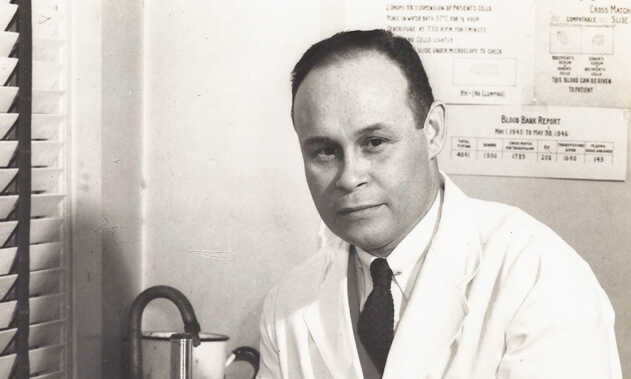On June 14, 2023, the World Health Organization rallied the world to donate blood to save lives. “Give blood, give plasma, share life, share often,” was the slogan for the World Blood Donor Day held in Algeria.
The Day, as expressed by the WHO, was among other things to appreciate and celebrate people who voluntarily donate blood to save lives. Have you ever asked yourself how hospitals are able to safely store the blood we donate in a system called blood banks for future use? Well, you may give “thanks” to Dr. Charles Drew, the African-American who birthed that novel concept.
In her book dubbed “The Life of Charles Drew: Blood Bank Innovator,” Anne Shraff recounts how the Second World War forced Great Britain to call on America for blood which subsequently revolutionalised the concept of blood bank.
It was in April 1940 and Germany’s Adolf Hitler had caused many European nations to fall. Great Britain, by then, became a stumbling block to his advancement and Hitler would rain terror on her too. By September, Adolf Hitler had ruined London and its adjoining countryside. Those killed or injured were in their thousands. For the injured, getting them blood to survive was integral. But that demand for blood was beyond Britain. So, it turned to America.
John Beattie headed Britain’s Army Blood Transfusion Service at the time. He wrote to America’s Blood Transfusion Betterment Association to request for pints of blood. In addition to this request, Mr. Beattie requested that America appointed the African-American Dr. Charles Drew to coordinate the blood donation exercise.
Anne Shraff says John Beattie taught Charles Drew in medical school the science of bacteriology. Beattie reposed much confidence in Drew, who, not long before that proposed appointment, had authored a thesis titled “Bank Blood.”
America accepted Britain’s request and got hundreds of volunteers to donate blood. The campaign was christened “Blood for Britain”. When Charles Drew was eventually named the medical director for the campaign, he developed a system which turned the donated blood into plasma (a component of blood).
According to the National WWII Museum, Dr. Drew then bottled the plasma in 1 liter units and he packaged six (of the 1 liter) to a case for transport to Britain. From August 1940 through to January 1941, the Blood for Britain campaign supplied a total of 5,000 liters of blood.
Born to Richard Thomas Drew and Nora Rusella Burrel Drew, in Washington DC, in 1904, Charles Drew grew up in a family which was neither rich nor poor. At 36, he had made an indelible mark in the field of medicine with his discovery of extracting plasma from whole blood. By 1941, however, Charles Drew resigned for his position at America’s National Blood Bank over the segregation of blood.
The National Blood Bank has said that it was not advisable to mix Caucasian and Negro blood “indiscriminately” for the military’s use.
It was not until 1944 that Charles Drew wrote a response to the director of the federal Labour Standards Association on the issue. “I think the Army made a grievous mistake, a stupid error in first issuing an order to the effect that blood for the Army should not be received from Negroes. It was a bad mistake for 3 reasons: (1) No official department of the Federal Government should willfully humiliate its citizens; (2) There is no scientific basis for the order; and (3) They need the blood,” portions of Drew’s letter read as quoted by National WWII Museum.
If we are to run a survey of people who have, at least once in their lifetime, received blood transfusions, you or your relatives and friends will probably give a glowing tribute to how you were saved through such transfusions. Dr. Charles Drew advanced the cause of banking blood and blood transfusion as a whole.
While we often express our gratitude to the doctors and nurses who care for us, after we are discharged from our sickbeds, we must not forget the likes of Dr. Charles Drew, who laid the foundation for the practice of modern medicine.






